GamesRadar+ Verdict
Pros
- +
Intense objective-based combat
- +
Badass free running
- +
Feeling like your team really needs you
Cons
- -
The eight maps quickly become repetitive
- -
No deathmatch
- -
not even just for fun
- -
No ladies?
Why you can trust GamesRadar+
My rifle’s chunky, deep report chops through the red bar over a stray defender’s head as he rushes to disarm my explosive charge. The lanky engineer should have brought friends, because on Brink’s floating city, one-man-armies may as well slurp up a bowl of bullet soup and call it a day.
The chinny, dreadlocked man crumples to the ground, flailing and praying for a friendly medic. His team isn’t far behind, and the confusion of battle might afford him a Revive Syringe and another attemptat disarming mycharge, so I stand over his body and chug rounds into his head until he goes limp and colorless.
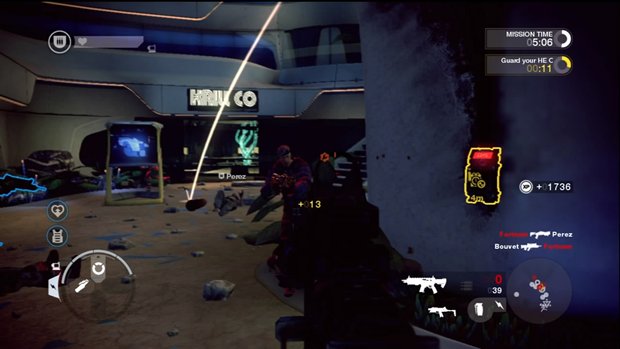
As I reload and look up, I realize that the bold, dead engineer unwittingly gave his team the upper-hand on me. It’s too late to reorient myself as his backup rushes through a corridor, and a Molotov cocktail sails into my face, chucking my feet into the air. Too overwhelmed to stand up, I fire maniacally at the invading team as it struggles against my own.
Lucky for us, they’re also too late – my charge goes BOOM and knocks 'em to their asses.
LittleBrinkPlanet
Brink is ambitious. The mechanics boldly corral players into team bonding without devolving into pointless "let’s see who can get the highest score without actually helping the team" pissing matches. There’s not much you can do in Brink, excluding standing around and shooting at your own feet, that doesn’t push your team toward its goal.
Additionally, Brink’s Smooth Movement Across Random Terrain (S.M.A.R.T.) system adds free running to the first-person shooter experience, and its detailed character and weapon customization feels more important than it should (Mohawk or gasmask? Oh, the choices!).
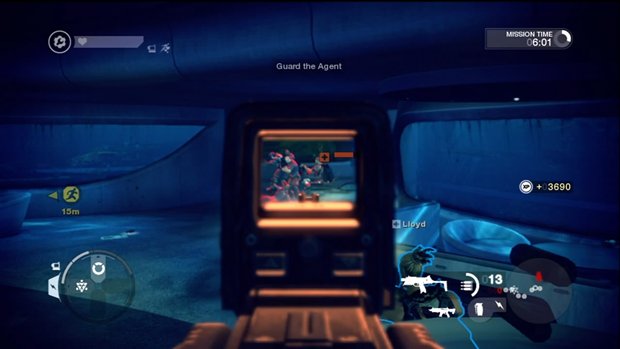
It’s only disappointing that Brink feels so confined by its ownpremise. Its innovative mechanics far outdo its lifeless, confining story, and, while respectable, its pure focus on multiplayer, team-based objective matches confines it further. Aside from a few “Challenge” maps which test your skills and unlock new weapons, the bulk of Brink consists of only eight objective-based maps, which can be played as either the Resistance or Ark Security.
The Ark is a floating city which was transported into open waters after the sea level rose and civilization collapsed. Ark Security seeks to maintain order, while the proletariat Resistance clamors to escape the city’s slums in search of what’s left of the world. Over the course of six missions (and two "what if?" scenarios), the two sides battle to rescue hostages, acquire intel, and blow stuff up to achieve overall victory. Each mission begins with a brief voice-over and cut scene to set up the scenario, but skipping them to get to the game faster won’t put much of a nick in the experience.
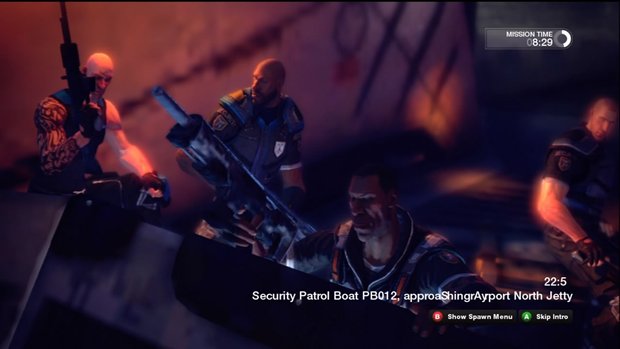
The story isn’t totally uninteresting, but the characters and missions are hardly memorable enough to warrant the number of unlockable audio logs in the game (can we be done with audio logs now?), and Brink’s mechanics feel bigger than the alternating rusty and sterile environments of the Ark. The game’s superbly-designed missions could have happened anywhere, so why limitthem to an isolated floating city where the only maps can be isolated floating city maps? It’s like Team Fortress 2 with a story – not really necessary, and it prevents the mechanics from being explored.
As disappointed as I am withits unmet potential, Istill thinkBrink is a great game. It's like a Cadbury Creme Egg - small, but full of rich,creamy filling. I can't describe every individual flavor packed into that filling in this review, because 1000 words on effective use of the Engineer class wouldn't help you understand the overall feeling of playing the game. If you want to know what the game is like, the closest you can get without playing it is to watch it, so I've recorded one entire match (against bots) in two parts. Watch the first part below:
Objectives and Classes
The eightscenarios - some of which canlast up to half-an-hour depending on how the defense fares -can be played with bots, other players, or a combination of both. Running through each side’s campaign in solo mode is alright once, as the bots are impressively human-like at times, but the scenarios would wear out too quickly were it not for the unpredictability and challenge presented by non-AI opponents. EvenBrink's goodAI couldn't pass theTuring Testquite yet.
Each mission is sectioned into two or more timed objectives which are completed in order, and are supported by secondary objectives. To accomplish the objectives, the teams must utilize Brink’s four classes in tandem, though each individual task will fall to one class' specific skill -soldiers plant explosive charges, engineers repair structures and defuse explosives, medics revive hostages to keep them moving, and operatives hack devices.
Secondary objectives include, among others,building barricades and machinegun nests, escorting other players,and capturing neutral, team-stat-boostingCommand Posts, one or more of which are scattered throughout the map.

From the team’s mainCommand Post (which cannot be captured) in its impenetrable spawn area, players can switch classes and weapons, and see how many members of each class are currently in play. That last part is Super Important, because if the team is heavy on medics, engineers, and soldiers when the objective requires hacking, you know that it’s up to you to become on operative and get the dirty work done. If, however, you’ve got four operatives on your team and no medics, you might be most useful in a supporting role.
Were Brink not so well-balanced, the whole team might instantly choose the primary objective class and rush it en masse. An army of soldiers versus one door that needs explodin’ ought to work, right? Not so much. It only takes a few players to complete an objective (some allow for combined efforts – engineers, for example, can repair structures faster with help), and the rest of the team is on protection duty. With no medics to revive downed soldiers, your team’s effectiveness will be crippled, and with no engineers building automated turrets and planting mines, your line will be easily breached – everyone has a role in the success of the team.
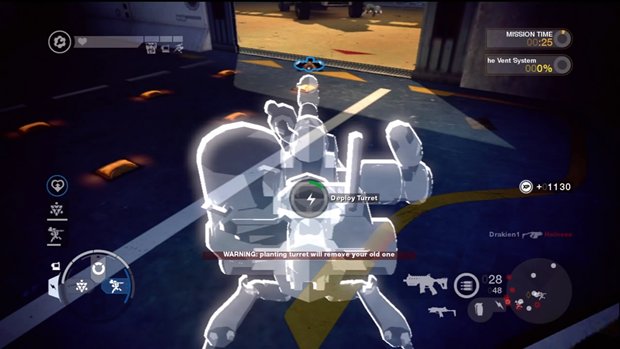
Above: Building a turret to defend an area - also notice the mine planted at the door
To better their contribution, players can bolster their character’s skills by earning experience and purchasing skills. Initially, only universal skills, such as the ability to shoot grenades midair or reload while sprinting, are available, but as players gain levels, they can begin to customize their favorite classes. Engineers, for example, can initially only lay landmines, but can upgrade earns them turrets, which can then be upgraded further.
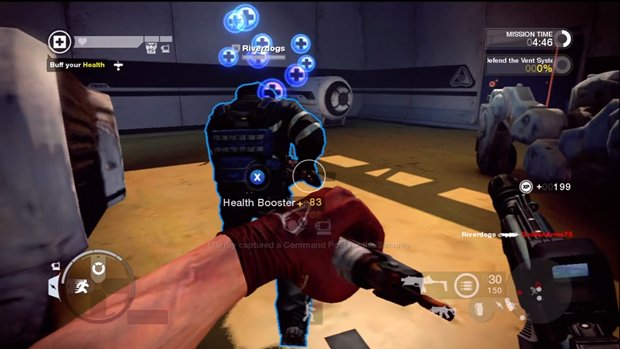
Above: Buffing your teammate's stats as a medic or engineer, or resupplying their ammo as a soldier, is much appreciated. It feels good to give!
Brink is complex, and I've only lightly dustedover the intricacies if its classes and objectives, so do yourself a favor and watch the game's painfully long introductory video before starting. I got the hang of everything pretty quickly, but a bit of pre-battle studying definitely helped, however dull it may have been. Once you know what you're supposed to be doing, and your motivation is secured, you can focus on the visceral activities of free running through the maps andpumpingbullets into yourgoat-faced enemies.
More info
| Genre | Shooter |
| Description | Quake Wars dev, Splash Damage, goes on the Brink. |
| Platform | "PS3","PC","Xbox 360" |
| US censor rating | "Teen","Teen","Teen" |
| UK censor rating | "16+","16+","16+" |
| Release date | 1 January 1970 (US), 1 January 1970 (UK) |




